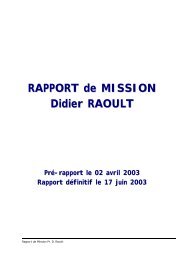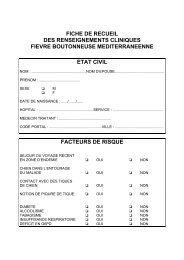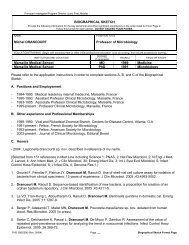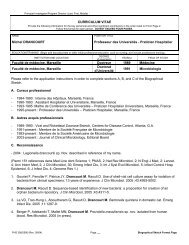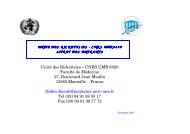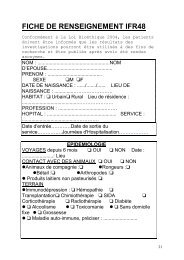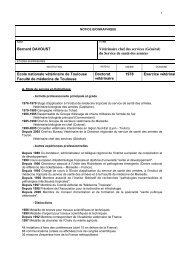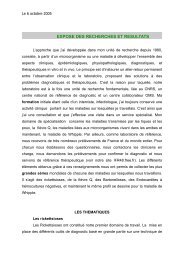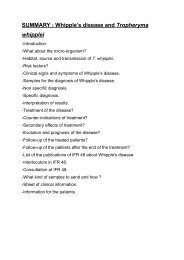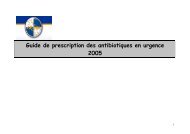Pericarditi
Pericarditi
Pericarditi
Create successful ePaper yourself
Turn your PDF publications into a flip-book with our unique Google optimized e-Paper software.
Clinical diagnosis?Clinical signs.<br />
• Progressive, frequently severe chest pain, generally worse<br />
when lying supine, relieved by sitting and might radiate to the<br />
neck, arms. Since the phrenic nerve crosses the pericardium,<br />
pericarditis is often responsible of pain to the trapezius<br />
muscle ridges.<br />
• Dyspnea worsened with decubitus dorsal.<br />
• Additional symptoms can be observed, particularly fever,<br />
cough, sputum production, and weight loss, but are generally<br />
related to underlying diseases.<br />
Physical examination<br />
•A pericardial friction rub is pathognomonic. The intensity vary<br />
quickly and it is best heard at the left sternal border at end of<br />
expiration with the patient leaning forward. It is audible<br />
throughout the respiratory cycle which makes the difference<br />
from pleural rub.<br />
TO LISTEN<br />
•http://www-sante.ujf-grenoble.fr/sante/CardioCD/cardio/<br />
chapitre/405.htm<br />
•Clinical signs in favor of tamponade (pulsus paradoxus)<br />
should be searched.




